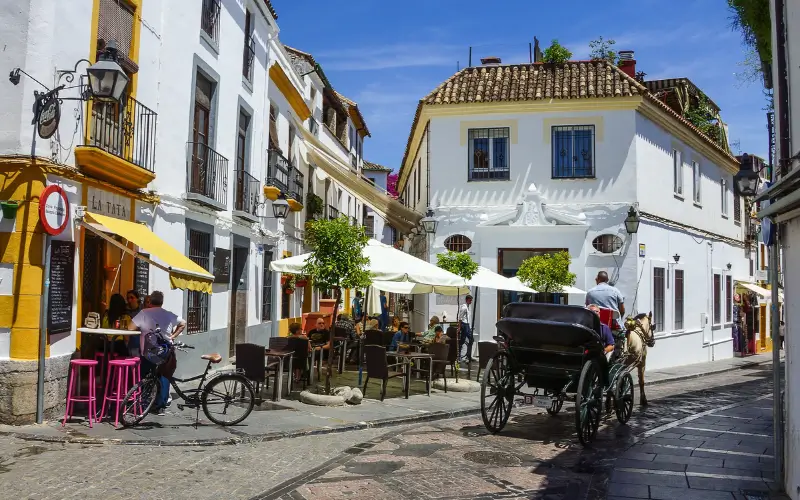
What Are The Hottest And Coldest Places In Spain?
Expat Tips
Published: 11 November 2022 18:29 CET
Updated: 26 April 2025 18:29 CET
Each of us is different.
Many of us will enjoy the extreme heat of summer, whereas others will be more comfortable living where the temperatures are on the milder side.
If you intend to move to Spain or come here for your holidays, you must be familiar with the weather in the region you intend to visit or call home.
In the following article, we discuss the hottest places in Spain, however, no article would be complete without also covering the country’s colder regions for those who prefer not to swelter during the summer months.
You will learn:-
- Spain’s hottest and coldest places
- The warmest Spanish regions during the winter months
- Average summer temperatures
- The five hottest places in Spain
- The highest recorded temperatures in Spain
- The lowest recorded temperatures in Spain
- How climate change will impact the Spanish weather
- The average summer highs and lows for each region
- And lots more.
Let’s take a look.
What are the hottest places in Spain?
Spain is renowned for its scorching summer temperatures. If you have spent any amount of time here, you will know that the heat can get rather intense.
The hottest months in Spain are typically July and August, and although the vast majority of the country will get hot, not every region will experience such extreme heat.
Whether you are moving to Spain or just visiting, you may want to avoid the following places during the summer months.
- Córdoba - If you don’t like extreme heat, you would be wise to avoid the Andalusian city of Córdoba during the summer months. With an average summer temperature of 36.5C in August, the heat can become unbearable.
- Seville - In second place is the Andalusian capital Seville with an average August temperature which often hits around 35.5C.
- Badajoz - Not such a well-known place, Badajoz which is in the region of Extremadura, close to the Portuguese border, comes next with an average August temperature of 34.2C.
- Murcia - Then there is the region of Murcia in the South-East of the country. Here it is not uncommon to experience real heat during the summer with the mercury reaching an average of 34.2C
- Granada - Not to be left out is the Andalusian city of Granada. A favourite with many tourists, temperatures in Granada is on par with Murcia with an average of 34.2C during August.
These are the top five hottest places in Spain, however, there are other regions and cities in the interior of the country that can also see temperatures soar during the summer months. These include the capital of Madrid, Toledo, Zaragoza and Ciudad Real.
Note that these are only the averages. Many cities and regions will see temperatures hit the 40 - 45C mark!!
Average summer temperatures in Spain
Below you can see a table of average summer temperatures for several of Spain's cities and regions.
| Region |
June |
July |
August |
| A Coruña |
Low 14C/High 21C |
Low 16C/High 22C |
Low 16C/High 23C |
| Alicante |
Low 18C/High 28C |
Low 21C/High 30C |
Low 21C/High 31C |
| Almería |
Low 19C/High 28C |
Low 22C/High 31C |
Low 22C/High 31C |
| Balearics |
Low 18C/High 26C |
Low 20C/High 29C |
Low 21C/High 30C |
| Barcelona |
Low 20C/High 26C |
Low 23C/High 29C |
Low 23C/High 29C |
| Bibao |
Low 13C/High 23C |
Low 15C/High 25C |
Low 16C/High 26C |
| Canary Islands |
Low 19C/High 26C |
Low 21C/High 28C |
Low 21C/High 28C |
| Cordoba |
Low 16C/High 32C |
Low 18C/High 36C |
Low 18C/High 36C |
| Madrid |
Low 16C/High 28C |
Low 19C/High 32C |
Low 19C/High 31C |
| Malaga |
Low 18C/High 28C |
Low 20C/High 30C |
Low 21C/High 31C |
| Murcia |
Low 17C/High 31C |
Low 20C/High 34C |
Low 21C/High 34C |
| Seville |
Low 17C/High 32C |
Low 19C/High 36C |
Low 19C/High 35C |
| Valencia |
Low 19C/High 27C |
Low 22C/High 30C |
Low 22C/High 30C |
What was the highest recorded temperature in Spain?
The highest temperature recorded in Spain was in August 2021 when a scorching 47.4C was registered in the Andalusian town of Montoro, Córdoba.
This beat the previous record by 0.1C which was also set in Montoro in 2017.
The highest unofficial readings were measured in Seville. In 1876, a temperature of 51C was recorded and in 1881, 50C. However, both of these readings are considered unreliable as they were measured under a standard exposure and in poor technical conditions.

Image: Cordoba, Spain
What was the coldest recorded temperature in Spain?
Even during the winter months, Spain’s temperatures are still considerably higher than most countries, however, it can still get very cold in some regions.
For example, the coldest temperature recorded was a bone-chilling -35.9C in Vega de Liordes, in the Province of León to the northwest of the country. Now that’s cold!
What are the warmest regions in Spain during the winter months?
Believe it or not, when it comes to the winter months in Spain it is very possible to be skiing in the morning and sunning yourself on the beach in the afternoon.
Winter temperatures are so warm that many foreign ‘Energy Nomads’ from the UK and other parts of Europe have been heading to Spain to escape the cost of living Crisis.
With the average UK energy bill currently at a colossal £2,500 per year and set to the rise, the head of the Costa del Sol’s Tourist Board, Francisco Salado, recently stated that British nationals could escape the energy crisis by spending the winter months here in Spain.
He said, “They will be better off spending the winter with us,” adding that many governments around Europe were actively encouraging their citizens to spend the winter in warmer countries such as Spain.
If you plan on visiting Spain or making the most of the warm winter sun, then you may want to visit the following regions which enjoy higher than average temperatures.
- The Canary Islands - The Spanish archipelago is a firm favourite with holidaymakers as it is the warmest winter location not only in Spain but the whole of Europe. With an average temperature of around 22C, the Canary Islands are the perfect destination for those looking to top up their tan during the winter months.
- Murcia - With winter temperatures reaching an average high of 18%, Murcia is another great destination to keep that tan topped up during the winter.
- Seville - Although the Andalusian capital is one of the hottest places in the country during the summer, the mercury tends to drop considerably over the winter months. However, temperatures are still higher than in most areas, and with an average of around 17C, Seville is a great choice for a winter getaway.
- Valencia - Another favourite destination to visit during the winter is Valencia on the country's east coast. With lows of around 8C and highs of 17C, Valencia is the perfect choice for those who want to stay warm during the winter season.
- Almeria - With an average winter high of 17C, just three days of rain per month and more than six hours of sunshine per day, Almeria may not be the first choice for many when booking a holiday in Spain, however, due to its barmy winter weather, it is ideal for a winter break.
- Mallorca - Although Mallorca is not as hot during the winter as the Canary Islands, it is still a great choice for those looking to enjoy some winter sun with temperatures averaging around 15C.

Image: Las Teresitas Beach, Tenerife, Canary Islands
How will climate change impact Spain’s weather?
As a result of climate change, Spain’s summer heat waves are not only starting earlier, but they are also getting hotter each year.
According to the country’s Ministry of Ecological Transition, October 2022 was the hottest on record since the data was first collected back in 1961.
In fact, October 2022 surpassed the previous record by 0.8C which was registered back in 2017.
Furthermore, the Ministry says that 2022 is already the hottest year on record when analysing the data from January to October.
With temperatures in some parts of Spain this summer reaching 45C, lives are also at risk, especially the elderly and those with cardiovascular-related health conditions.
In July 2022, the Ministry of Health announced that 1,047 Spanish citizens had lost their lives due to the extreme summer heatwave.
With the 2022 Climate Change Conference (COP27) currently being held in Sharm El Sheikh, Egypt, scientists are warning that future heatwaves will only become more frequent if the issue of climate change is not addressed now.
Learn more about the weather in Spain.

















